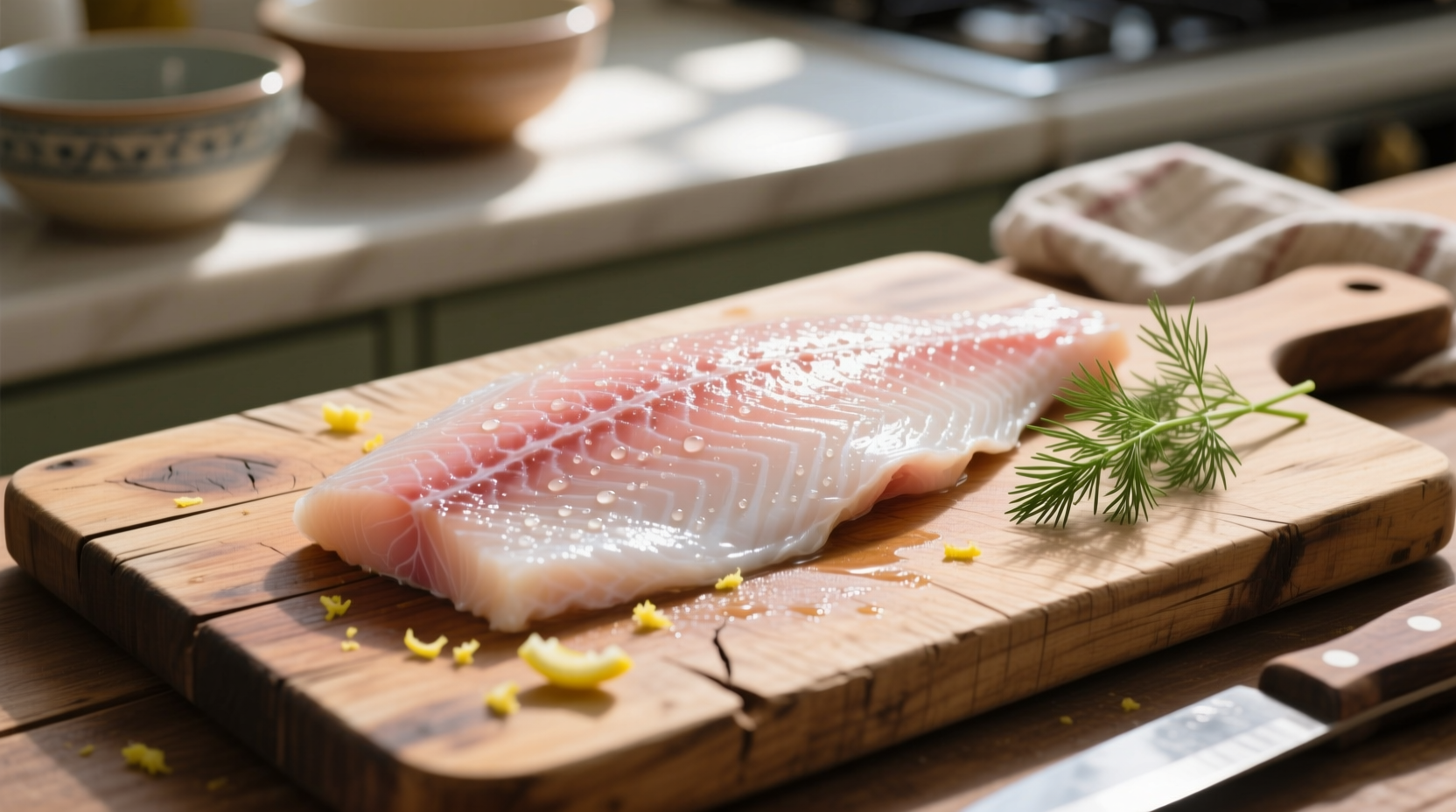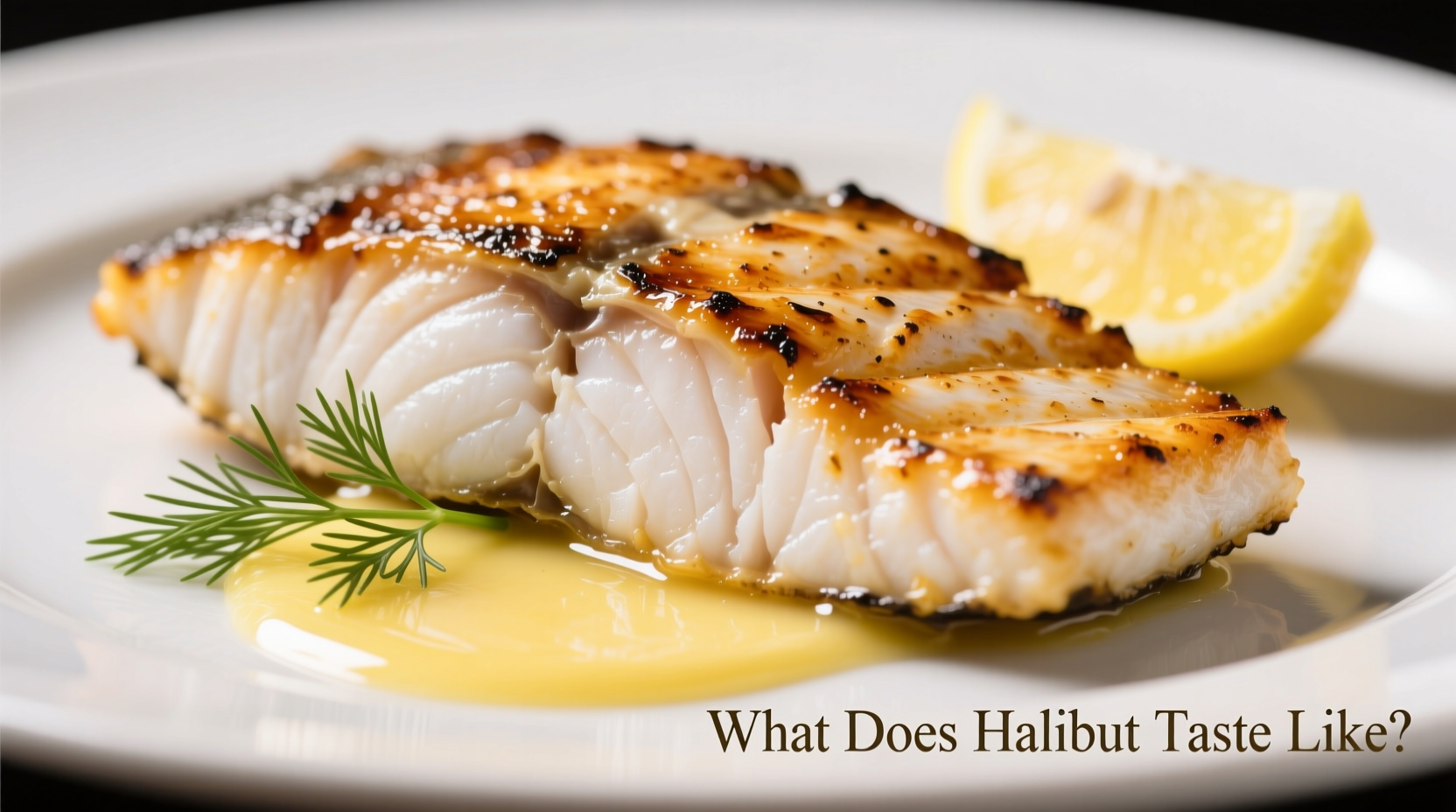Halibut has a mild, sweet flavor with firm, meaty texture that's less 'fishy' than many other seafood options. Its clean taste profile makes it versatile for various cooking methods and flavor pairings, appealing to both seafood enthusiasts and those new to fish.
When you're deciding whether to try halibut for the first time or wondering how it might work in your next recipe, understanding its precise flavor characteristics is essential. This comprehensive guide breaks down exactly what to expect from this popular white fish, backed by culinary science and chef insights.
Halibut's Core Flavor Profile Explained
Halibut stands out among white fish varieties for its distinctive yet approachable taste. Unlike stronger-flavored fish like mackerel or bluefish, halibut offers a clean, delicate sweetness that doesn't overwhelm the palate. The flesh has a subtle nuttiness reminiscent of fresh scallops, making it an excellent introduction to seafood for beginners.
Texture plays a crucial role in halibut's appeal. When properly cooked, it maintains a firm, meaty consistency that holds together well—unlike more delicate fish like sole or flounder that can easily fall apart. This structural integrity makes halibut ideal for grilling, pan-searing, and even raw preparations like ceviche when exceptionally fresh.
| Fish Variety | Flavor Intensity | Texture | "Fishiness" Level |
|---|---|---|---|
| Halibut | Mild to moderate | Firm, meaty | Low |
| Cod | Mild | Flaky, delicate | Very low |
| Salmon | Strong | Rich, oily | Moderate |
| Tilapia | Very mild | Soft, flaky | Very low |
This comparison shows why halibut occupies a sweet spot between extremely mild fish like tilapia and stronger options like salmon. According to NOAA Fisheries research, halibut's moderate fat content (approximately 1.5-2% compared to salmon's 10-15%) contributes to its balanced flavor profile that's substantial without being overpowering.
How Halibut's Taste Varies by Source and Preparation
Several factors influence halibut's final taste experience, creating subtle but noticeable differences:
Wild vs. Farmed Halibut Flavor Differences
Wild-caught Pacific halibut typically has a cleaner, more complex flavor than farmed varieties due to its natural diet and active lifestyle. The Alaska Department of Fish and Game notes that wild halibut feeding on squid, crab, and smaller fish develop more nuanced flavor compounds than those raised on formulated feeds. Farmed halibut tends to be milder with slightly softer texture, making it preferable for delicate preparations.
Cooking Method Impact on Flavor Development
The preparation technique dramatically affects halibut's taste profile:
- Grilling: Adds smoky notes that complement halibut's natural sweetness without overpowering it
- Pan-searing: Creates a flavorful crust while keeping the interior moist and tender
- Baking: Preserves the purest expression of halibut's natural flavor
- Raw preparations: Showcases halibut's clean taste when impeccably fresh
Professional chefs at the James Beard Foundation culinary institute emphasize that halibut's moderate fat content allows it to absorb flavors beautifully while maintaining its distinctive character—unlike leaner fish that can become dry or oilier varieties that dominate with their own flavor.

Addressing Common Halibut Taste Concerns
Many people wonder "does halibut taste fishy?"—the answer is generally no when properly handled. Fresh halibut should have a clean, ocean-like aroma rather than a strong "fishy" smell, which typically indicates improper storage or age. The University of California Sea Grant program confirms that halibut's lower fat content compared to oily fish reduces the development of fishy odors during storage.
Another frequent question is how halibut compares to cod. While both are white fish, halibut has a noticeably firmer texture and slightly richer flavor. Cod tends to be more delicate and flaky, while halibut maintains its structure better during cooking—making it preferable for recipes requiring precise presentation.
Practical Tips for Maximizing Halibut's Flavor
To get the best taste experience from halibut, follow these chef-recommended practices:
- Selection: Look for firm, translucent flesh with no brown spots or dry edges
- Storage: Use within 1-2 days of purchase, stored on ice in the refrigerator
- Preparation: Pat dry thoroughly before cooking to ensure proper searing
- Seasoning: Complements citrus, herbs, and light sauces without being overwhelmed
- Cooking temperature: Cook to 130-135°F internally for optimal texture and moisture
According to culinary research from the Culinary Institute of America, halibut's flavor peaks when cooked medium-rare to medium—slightly higher than many other fish. This is due to its dense muscle structure that benefits from slightly longer cooking to fully develop its sweet notes while maintaining moisture.
Why Halibut Appeals to Diverse Palates
Consumer taste surveys conducted by the National Fisheries Institute reveal halibut consistently ranks among the top three most-accepted fish varieties among Americans who claim to "dislike fish." Its mild flavor profile, low fishiness, and meaty texture make it particularly appealing to those new to seafood. The same surveys show halibut's popularity spans multiple demographic groups, with particular appeal to health-conscious consumers seeking lean protein options.
When properly prepared, halibut delivers a satisfying eating experience that bridges the gap between land and sea proteins—making it an excellent choice for mixed-diet households or special occasions where you want to serve something impressive yet approachable.
Does halibut taste fishy?
No, fresh halibut has a mild, sweet flavor with minimal fishiness. Its clean taste makes it one of the least 'fishy' seafood options, appealing to those who typically avoid fish. Any strong fishy odor indicates the fish is no longer fresh.
How does halibut compare to cod in flavor?
Halibut has a slightly richer, sweeter flavor and firmer texture than cod. While cod is more delicate and flaky, halibut maintains its structure better during cooking and offers a more substantial mouthfeel without being oily.
What's the best way to cook halibut to enhance its flavor?
Pan-searing creates a flavorful crust while preserving moisture, while grilling adds complementary smoky notes. For purest flavor expression, baking with minimal seasoning allows halibut's natural sweetness to shine. Always cook to 130-135°F internally for optimal texture.
Is wild halibut noticeably different in taste from farmed?
Yes, wild-caught halibut typically has a cleaner, more complex flavor profile due to its natural diet. Farmed halibut tends to be milder with slightly softer texture. The Alaska Department of Fish and Game notes wild halibut develops more nuanced flavors from feeding on squid, crab, and smaller fish.
What flavors pair best with halibut?
Halibut complements citrus (lemon, lime), fresh herbs (dill, parsley), light sauces (beurre blanc), and subtle spices. Its moderate fat content allows it to absorb flavors beautifully while maintaining its distinctive character—unlike leaner fish that can become dry or oilier varieties that dominate with their own flavor.











 浙公网安备
33010002000092号
浙公网安备
33010002000092号 浙B2-20120091-4
浙B2-20120091-4